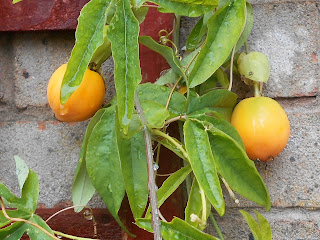For gardeners and botanists it is, however, the time of the year when Michaelmas Daisies come into flower. Asters are at their finest around late September-early October - except that many of them are no longer asters; we must now refer to them as species of Symphotrichum. We now have, for example, Symphotrichum novi-belgii together with S. novae-angliae. Other "asters" are now placed with the Golden-rods in the genus Solidago, some in the genus Senecio and so on. Literally hundreds of changes have been made in recent years but of course the genus Aster still exists. It consists of Aster amellus and about 100 other species. All this may seem very frustrating but is important to our understanding of taxonomy, and is important too for horticulturalists who wish to create new hybrids. To the non-botanist the details are tedious and I will dwell on them no further but refer anyone interested to the Internet where, Salome-like*, all is revealed.
So, what I bought as Aster novi-belgii Winston S. Churchill is now Symphotrichum novi-belgii Winston S. Churchill, and I must change the label.
 |
Symphotrichum novi-belgii Winston S. Churchill in flower in our back
garden. at Stefen Hill, Daventry. 27 September, 2016
|
Named after a right-wing politician, it ought to be a distinctly blue colour; instead it is of a somewhat left-wing persuasion with a pinky-lilac hue - perhaps it is a Blairite. Most 'asters' are very good for attracting butterflies and other insects. Furthermore these 'New England' varieties are generally resistant to mildew, a problem which plagues many of its relatives.
Some years ago I recorded 'Aster lanceolatus' from Byfield Pocket Park and I must now amend my records to Symphotrichum lanceolatum. But has the species survived there? I visited the pocket park earlier today and eventually located it.
However, it is struggling. It is situated beside a huge clump of Rose-bay Willow-herb, Chamerion angustifolium, and is steadily being overwhelmed. Memory can be fallible but I am sure that there is less of it than four years ago. Some will argue that its disappearance would be no great loss as it is an introduction, with small flowers only an inch or so across. I think it would be a pitybut in truth the pocket park itself is now much neglected and many less robust plants will be eventually be crowded out. But that is another story...
* As readers will know, most of the stories attached to Salome, with her 'Dance of the Seven Veils', are apocryphal and based on fevered imaginations. And people don't like the facts to get in the way of a good story.
Some years ago I recorded 'Aster lanceolatus' from Byfield Pocket Park and I must now amend my records to Symphotrichum lanceolatum. But has the species survived there? I visited the pocket park earlier today and eventually located it.
 |
Symphotrichum lanceolatum in the pocket park at
Byfield, Northants. 28 September, 2016
|
* As readers will know, most of the stories attached to Salome, with her 'Dance of the Seven Veils', are apocryphal and based on fevered imaginations. And people don't like the facts to get in the way of a good story.






































